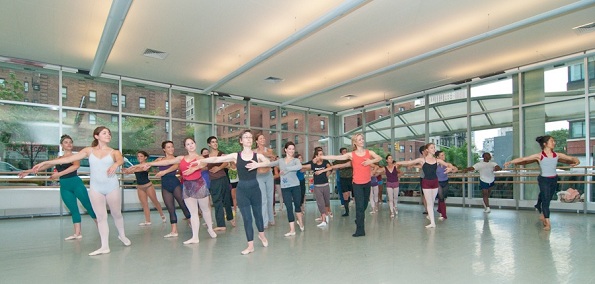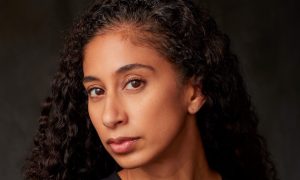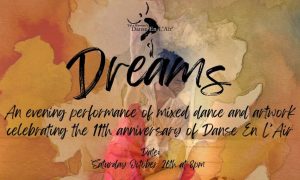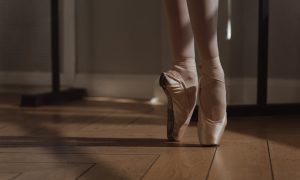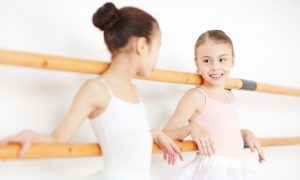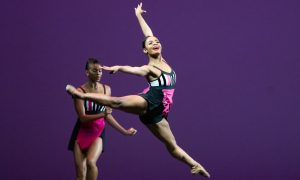By Laura Di Orio.
For young, aspiring dancers and also for professional dancers, dance class is a place where the focus is on honing in on technique or warming up for a day of rehearsals. For adults and “non-dancers”, however, dance class becomes an artistic, freeing, fun alternative to a gym workout. So how do teachers approach teaching adult students and make dance accessible and enjoyable for all? Here, Dance Informa speaks with some teachers who welcome “non-dancing” adults in class and show them that they, too, can actually feel like dancers.
“When teaching adults, you must meet them where they are at,” says Kat Wildish, a master classical ballet instructor at the Ailey Extension in New York City. “They are professionals in their own fields and bring those tools, experience and the knowledge they have achieved with them. Respect is the key. They want to be treated as adults and yet have fun doing it!”
Wildish has 38 years of experience teaching dance to all levels and ages, with students ranging from three to 102 years old. Now, she mainly teaches adults and has quite a following. In her open ballet classes at the Ailey Extension, Wildish sees students of varying professions – bankers, doctors, lawyers, editors, therapists, architects, secretaries – many of whom attend classes a few times a week. She says she takes each student seriously, regardless of technical ability or age, but also sprinkles her classes with humor.
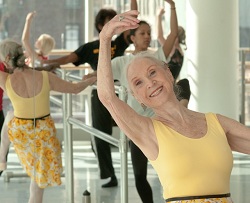
One of Kat Wildish’s regular adult ballet students during class at the Alvin Ailey Extension. Photo by Arthur Coopchik
“Adults want to be challenged, in a safe environment where they can trust and learn,” Wildish says. “I believe these are the same for all of us. The element of play is there in us even in adulthood. It’s okay to laugh at ourselves along the way and to applaud our triumphs and those of others. The dance classroom becomes a community of your friends and likeminded people from different walks of life. You begin to feel a camaraderie that just cannot be found elsewhere.”
Abi Hammond, who teaches adult ballet classes at Connecticut Ballet Center, says she tries to really challenge her students but also strives to incorporate the joy of dance.
“They may not have careers in dance ahead of them, but that doesn’t mean that they don’t want to be the best they can be,” Hammond says. “I try to push them for improvements and challenge them to project and create magic moments as they move through the studio. To me, it’s very important that their classes have a strong artistic focus. If they weren’t interested in artistry, they would be in a gym. But they want more than that.”
For adults, dance class, with its elements of music and being a part of something creative and expressive, becomes an enjoyable way to get a good workout. Since it is often their workout, teachers need to be attuned to the adult body and how it differs from young dance students and professionals.
“There is a different level of musculoskeletal safety that I am responsible for,” Hammond says, “because for the most part I am working with bodies that aren’t accustomed to the alignment, turnout and flexibility required by ballet.”
“Many adults can no longer jump due to foot injuries or hip replacements, or cannot turn due to vertigo,” Wildish adds, “so we adapt those combinations and provide options that can be done, so that those ‘excuses’ become one’s assets again.”
Wildish says that one of the challenges of teaching adults is the “book of excuses” they sometimes bring into the studio. “Sometimes the entire class is a ‘hospital’ class – vertigo, sore ankle from shopping, stiff shoulder from lifting grandkids – but a good workout seems to make things better for all, and I love them for coming,” Wildish says.
Melissa Weber, a dancer with the Charleston Ballet Theatre (CBT) and a faculty member at the CBT Dance Education Center, says she enjoys teaching adults because they tend to be “easy-going and behave better” than children.
“They are more relaxed, and it is very easy to work with them,” Weber says. “Since your brain matures the older you get, they can retain a lot of information.”
Most of the adults who take recreational dance classes have no aspirations of a performance career, and class is often their only performance venue. Wildish, however, has been working to change that. Since 2000, she has offered performance opportunities to her adult students, allowing them to learn and perform excerpts from classical ballets. Through these performance workshops, she has also paved the way for other teachers to allow their adult students to perform nearly every style of dance.
These performances are held three times a year, complete with costumes and lights and often to sold-out audiences, at the Ailey Citigroup Theater in NYC. Wildish says she wants her adult students to experience “the lights, the makeup, the costumes, video, photos, stage crew, technical rehearsal, the grind, the excitement, the exhaustion, the thrills, the rewards”, just like any professional dancer.
“I think it’s important to offer these opportunities for adults and non-professionals, as it’s a responsibility to yourself and to all the other dancers in the cast who have put in the time and hard work, have overcome fear and obstacles, and have achieved something greater than they ever thought possible,” Wildish says. “These dancers perform and move the audience in so many ways, and our houses are continually sold out because our audience feels these dancers, and many actually become these dancers! It’s important to offer up these opportunities to our community because these are our audiences and fans for our professional companies. These are our patrons and supporters in the dance world. The joy of seeing these adults perform always brings heartfelt tears to me.”
All of these teachers encourage any adult who has an inclination to try a dance class to just go for it.
“A lot of adults are first-timers and scared to put on a leotard and tights,” Weber says. “I recommend calling studios in your area and asking who has adult classes and learn the schedule and enrollment. Bring a friend or two so you don’t feel uncomfortable.”
Wildish agrees. “Come and just jump in,” she says, “and not in the corner. You can’t see back there!”
For those interested in participating in Wildish’s upcoming fall Performing in NY Experience Intensive, from October 15 to November 21, visit: http://clients.mindbodyonline.com/ws.asp?studioid=851&stype=41&prodid=1161.
Top photo: Kat Wildish leading her open ballet class, often frequented by adults and “non-dancers”, at the Alvin Ailey Extension Photo by Arthur Coopchik.


